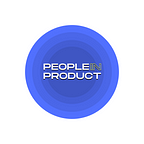Product Feature Prioritization (using the B-RICE model) — Ikenwa Chukwunonso
Nonso is a Product Manager and Analyst at Riby. He started off his career as a project manager back in his university days while still actively involved in school politics. He held positions as House representative for the Physics department at the Faculty of Science, General Secretary, Faculty of Science Election board, and Class Rep. He studied Applied Physics and majored in Electronics. He started off his professional career as a Project manager at Kreador tech before moving to Riby Finance as a Product Analyst and Product Manager. He enjoys politics and social issues and is a huge fan of Joe Biden.
Why is Product feature prioritization an important process when building products?
The truth is that the PM role is hard. Product Managers are like superheroes with a lot of things thrown at us and we have to be on our A-game every time.
To borrow a quote from Spiderman “With great power comes great responsibility”. You can’t build every feature or every idea thrown at you so it’s important you prioritize and do it in the right way.
It helps the maturity and scalability of the product also. Prioritization is very necessary.
Can you explain what this B-RICE model is about?
The B-RICE model was coined out of the RICE model. Rice model was introduced by the product team at Intercom.
B — Business Importance
R — Reach
I — Impact
C — Confidence
E — Effort
The uniqueness of this model is that it focuses on business importance. Without money to fund products, product management may not be possible
Why should we use this B-RICE model and not the other traditional ones we are familiar with? What’s the differentiating factor?
The differentiating factor is the Business Importance.
They are a lot of models available like the KANO model which focus on customer delight, MOSCOW model, Complexity quadrant, Opportunity scoring, Story mapping that follows the user story and see which is less stressful for the user, and the rest. Whichever works well for you, your team, and your product you can apply it as ur Prioritization framework.
Please share in detail; a practical example of how we can use this B-RICE model for prioritization?
The B-RICE model is a scoring system model where you can attach ranked numbers and percentages to a parameter. I will drop a medium link after this class to share in more detail how you can use the B-RICE model in a particular feature or product. For example, the team has a lot of features to build and wants to prioritize. They assign numbers and have a scoring tally to each.
They ideate and discuss what score goes to each based on quantitative data and tabulate it then get the total and the average. It will be clear which gets prioritized based on the scoring system.
Let’s take an example. A bank has 3 features they want to push out and they have to prioritize;
- Overdraft
- Loans
- USSD integration
They start with Reach. Reach is simply represented in terms of numbers. It helps us to understand how that feature will impact the customers and how many people will use it. So banded on Overdraft, not many people might use it so we can grade it like a 3 out of 5.
Then Impact, Impact tried to quantify the effect of the end-user. i.e Customer delight. A lot of customers will be happy to have extra money to withdraw or spend so we can do like a 4 out of 5.
Confidence: A confidence score gives you an estimated percentage to boost the priority level of that feature (I will explain more in the medium article).
100% = High Confidence
80% = Medium confidence
50% = Low confidence.You can convert this to out of 5 numbers by using the simple function. So let’s say this is medium confidence.
Effort: How much work it will take. You speak to the engineering and the business team about it and deliberate. Let’s say this is like a 4.
Mind you, these are estimated figures.
Business Importance: To consider its importance to the overall business.
Let’s say 3.
Tabulate ur figure and calculate the average on each feature and analyze it. That’s all.
After the discussion session, we had questions from the members of the community, here are some of them.
Does this prioritization model work for early-stage ideas?
Early-stage start-ups are trying to find Most Viable Product and Product-Market Fit. So their goal is to enter the market and see what sticks. I might not advise an early-stage start-up to use this method if it is still trying to find PMF. Their objective is to secure funding and have a fighting chance at staying in the market. Prioritization deals with a lot of qualitative and quantitative data so that might extra cost to the business. If they have the funds and resources, it’s fine… Win-Win!
In terms of applying prioritization frameworks, do you apply them before constructing a roadmap or after, when is the best time? and when getting buy-in from stakeholders, is it important that they are aware of these terms as well?
Before and after in some cases… Before I draft out my roadmap, I list all the features down and ideation starts with the team… So I advise you do it before. After is in the case of a sudden change like the covid-19 pandemic which made pivoting so crucial and quick. Just be so flexible that’s all I say
Shareholder buy-in is a long conversation and analogy. It is relative to the environment and also the product…
